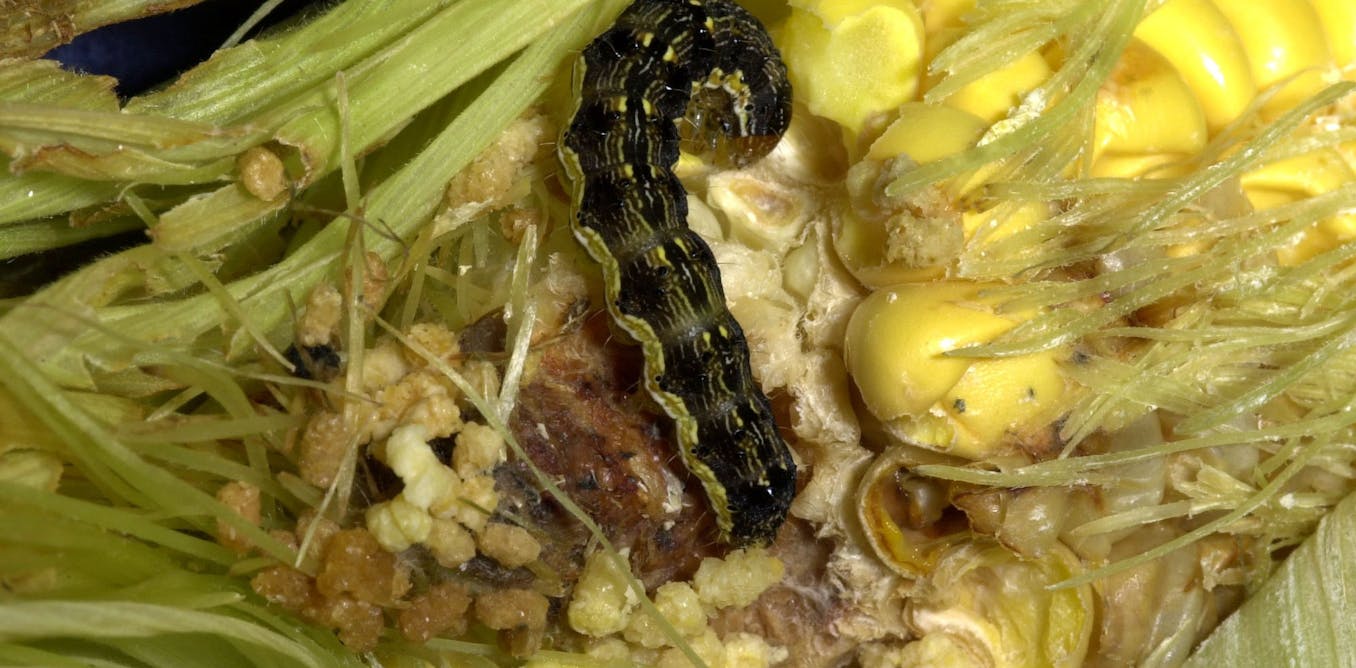
Will superbugs overwhelm insect-resistant gm crops?
- Select a language for the TTS:
- UK English Female
- UK English Male
- US English Female
- US English Male
- Australian Female
- Australian Male
- Language selected: (auto detect) - EN
Play all audios:
A recent report in the Wall Street Journal spoke of rootworms in the US state of Iowa that had evolved resistance to a strain of genetically modified (GM) corn developed especially to thwart
those rootworms. Some media coverage at the time suggested the resistance could lead to the evolution of “superbugs” and expressed concern about GM food more generally. But just how common
is the evolution of resistance to GM crops? And how justified are concerns about the use of GM food crops more generally? First, it’s worth noting that in 2010, more than 10% of the world’s
arable land was sowed with genetically modified (GM) crops. In fact, GM crops are one of the most rapidly adopted agricultural technologies in history, with more than 1 billion hectares
planted since 1996. GM crops have reduced the use of pesticides by at least 352 million kilograms since 1996, reducing the environmental impact of agriculture by 16%, compared with
conventional production methods. In this way, the development of GM crops has been beneficial, well beyond its health and food security benefits. PEST PROTECTION GM insect tolerance is
created by enhancing crops with genes taken (and then modified) from a bacterium called _Bacillus thuringiensis_. Crops modified in this way are typically referred to as “Bt crops”. Bt crops
are very specific in their ability to target pest species and, compared with traditional insecticides, have minimal impact on species they don’t target. But as was true even before GM
crops, farmers have had to deal with agronomic issues, including slowing (or attempting to prevent) the evolution of resistance in pests. So far, resistance to Bt proteins has been
relatively modest. This is in sharp contrast to chemical insecticides, for which resistance has typically evolved in five to seven years in most of the targeted pests. While some species
have evolved a resistance to Bt sprays – species such the diamondback moth, a pest of crucifers such as cabbage – there have been only three cases of resistance to Bt crops. In all three
cases, the resistance evolved in caterpillars: In all of these cases, the primary drivers of resistance were: * a relative insensitivity to the Bt protein (the GM-insecticide), and * the
lack of “refuges” – small crop areas that were not GM. Refuges ensure that Bt-susceptible insects can continue to reproduce and dilute any resistance that might evolve in other insects. It’s
not too surprising that resistance evolved in the large areas planted by thousands of small landholders in South Africa (2 million hectares of Bt corn), or millions of farmers in India (9
million hectares of Bt cotton). Among small landholders, it is very difficult to organise refuges. TWO BT GENES ARE BETTER THAN ONE In Australia and the US, two different Bt genes are often
used in each GM plant to thwart bugs with a low sensitivity to GM insecticides (such as cotton bollworms and corn earworms). The rationale being: if one Bt protein doesn’t get them, the
combination will. In the case of Iowa’s Bt-resistant corn rootworms, the bugs evolved resistance to plants containing one particular Bt toxin, but not to plants that contained a separate
toxin type. Corn rootworms are quite a devastating pest to corn, and have a history of evolving resistance, not only to insecticides, but even to crop rotation. Traditionally, corn is
rotated with soybeans (which rootworms don’t eat) but rootworms have evolved the ability to survive the soy year and come back to attack corn. So how did the rootworms evolve resistance? For
a start, they aren’t very sensitive to the unique Bt proteins used to try and kill them. For resistance to evolve to corn expressing only the one toxin is not a great surprise – recall that
two different Bt toxins are often used in the one plant. But in the paddocks of Iowa (and Illinois, see video above) in which resistance evolved in rootworms, the risk had to be taken.
There was an urgent need to reduce the use of soil insecticides for rootworm control, especially in areas where crop rotation was failing. It was a gamble that, ultimately, didn’t pay off.
Dealing with resistance in weeds and insects has been a problem for farmers globally for at least 40 years. Indeed, it will continue to be a challenge for farmers into the foreseeable
future. The greater challenge is in assisting farmers in developing countries (such as South Africa, China, India, Pakistan and Burkina Faso) with _their_ Bt crops. If we can help keep the
bugs (and “superbugs”) away from crops in developing countries, it will make the fight for global food security that little bit easier.